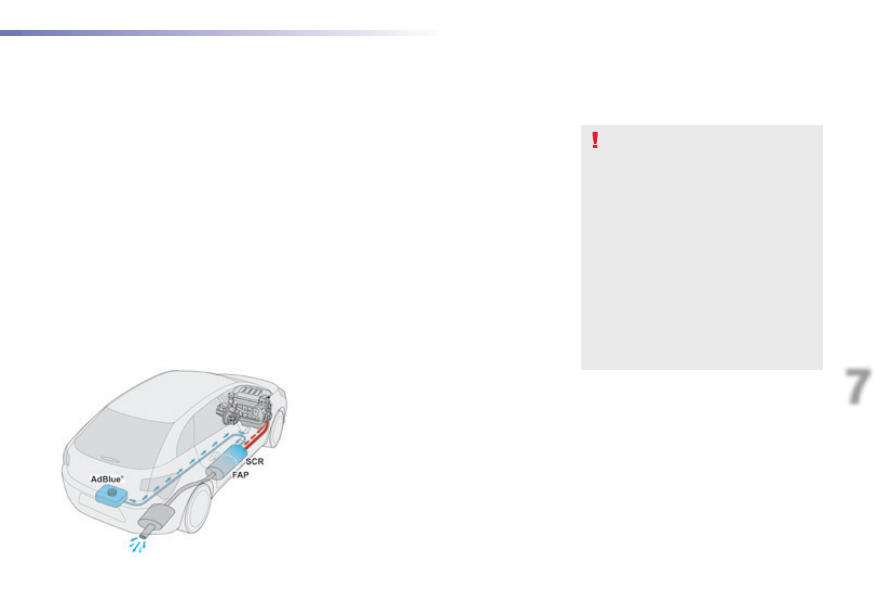Peugeot 508 (2016 year). Instruction - part 15

223
7
Practical information
508_en_Chap07_info-pratiques_ed01-2016
AdBlue
®
additive and SCR system
for BlueHDi Diesel engines
to assure respect for the environment and
conformity with the new euro 6 emissions
standard, without adversely affecting the
performance or fuel consumption of Diesel
engines, PeugeOt has taken the decision to
equip its vehicles with an effective system that
associates SCR (Selective Catalytic Reduction)
with a particle filter (FAP) for the treatment of
exhaust gases.
Presentation of the SCR system
using an additive called AdBlue
®
containing
urea, a catalytic converter turns up to 85%
of nitrous oxides (NOx) into nitrogen and
water, which are harmless to health and the
environment.
the AdBlue
®
additive is held in a special
tank located under the boot at the rear of
the vehicle. It has a capacity of 17 litres: this
provides a driving range of about 12 500 miles
(20 000 km), after which an alert is triggered
warning you when the reserve remaining is
enough for just 1 500 miles (2 400 km).
During each scheduled service of your vehicle
by a PeugeOt dealer or a qualified workshop,
the AdBlue
®
additive tank is refilled in order to
allow normal operation of the SCR system.
If the estimated mileage between two services
is greater than 12 500 miles (20 000 km), we
recommend that you go to a PeugeOt dealer
or a qualified workshop to have the necessary
top-up carried out.
Once the AdBlue
®
tank is empty, a
system required by regulations prevents
starting of the engine.
If the SCR is faulty, the level of
emissions from your vehicle will no
longer meet the euro 6 standard: your
vehicle becomes polluting.
In the event of a confirmed fault
with the SCR system, you must go
to a PeugeOt dealer or a qualified
workshop as soon as possible: after
a running distance of 650 miles
(1 100 km), a system will be triggered
automatically to prevent engine starting.